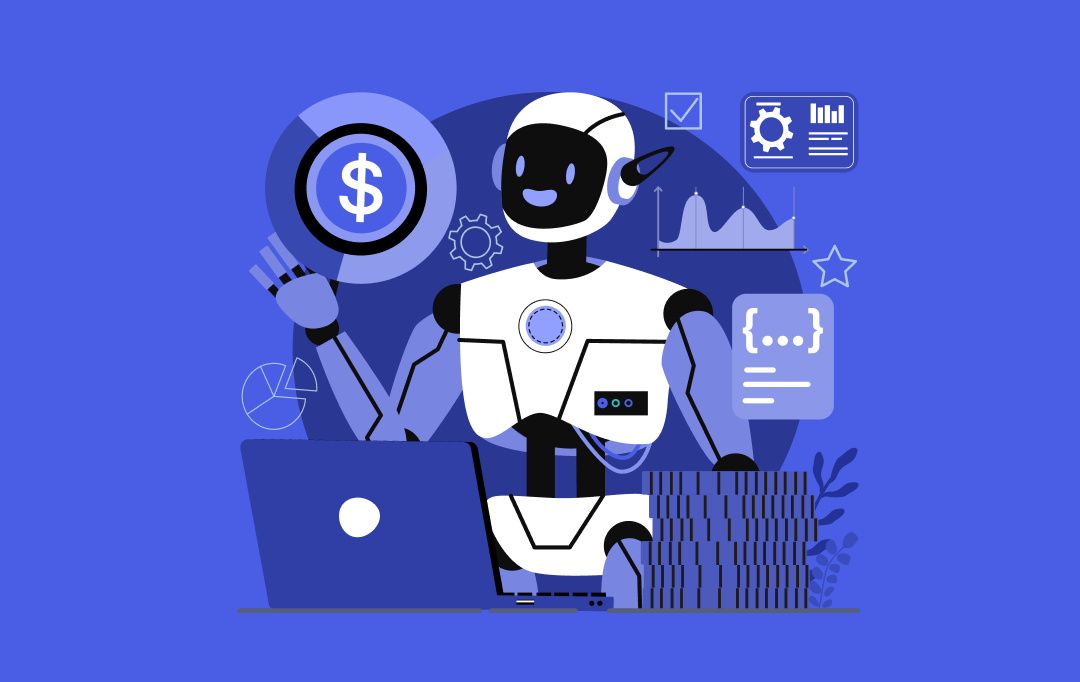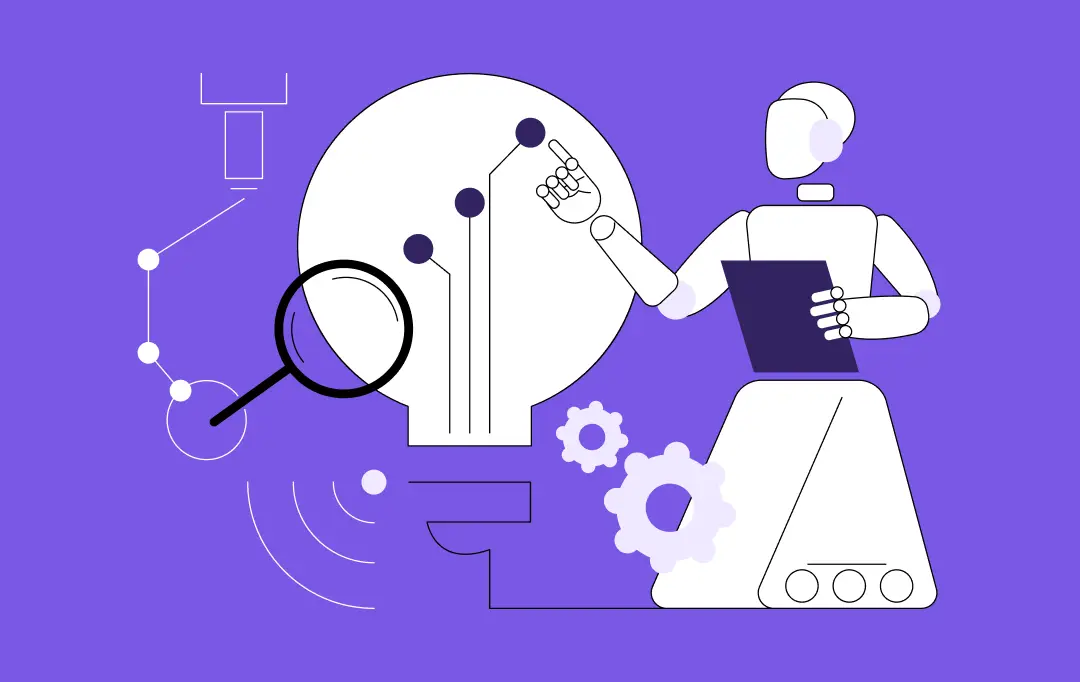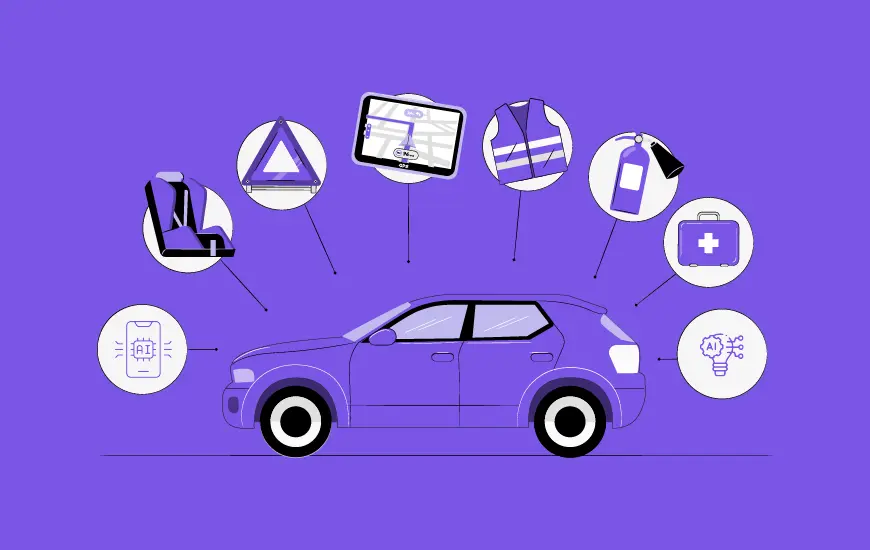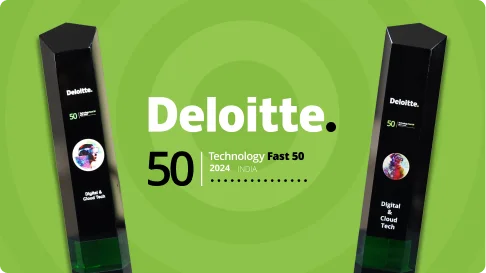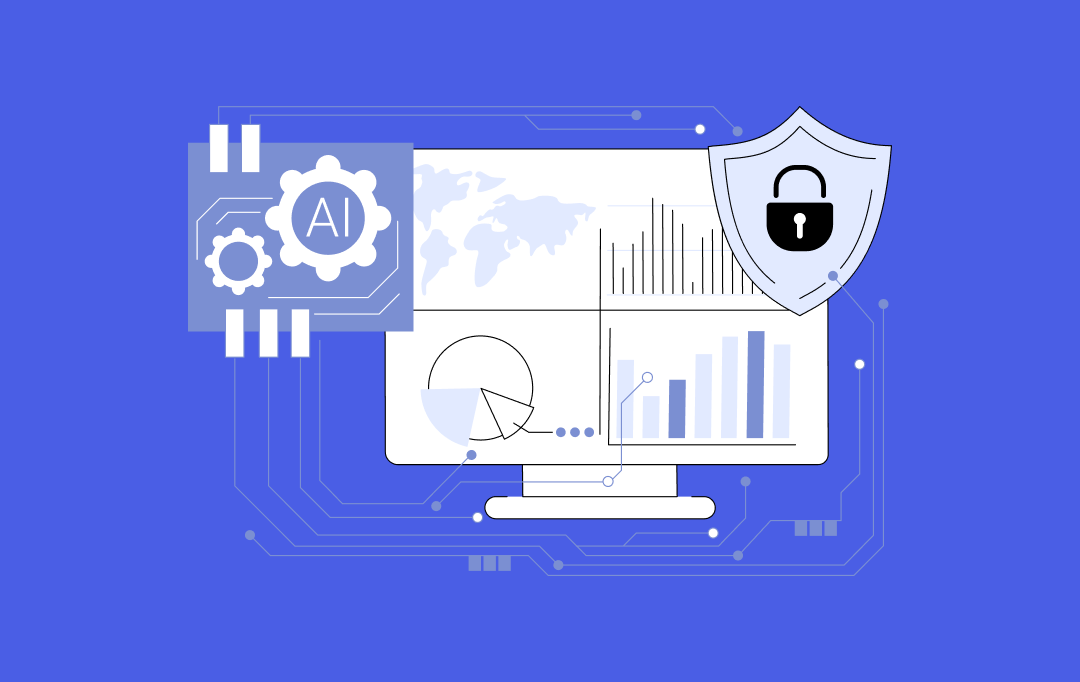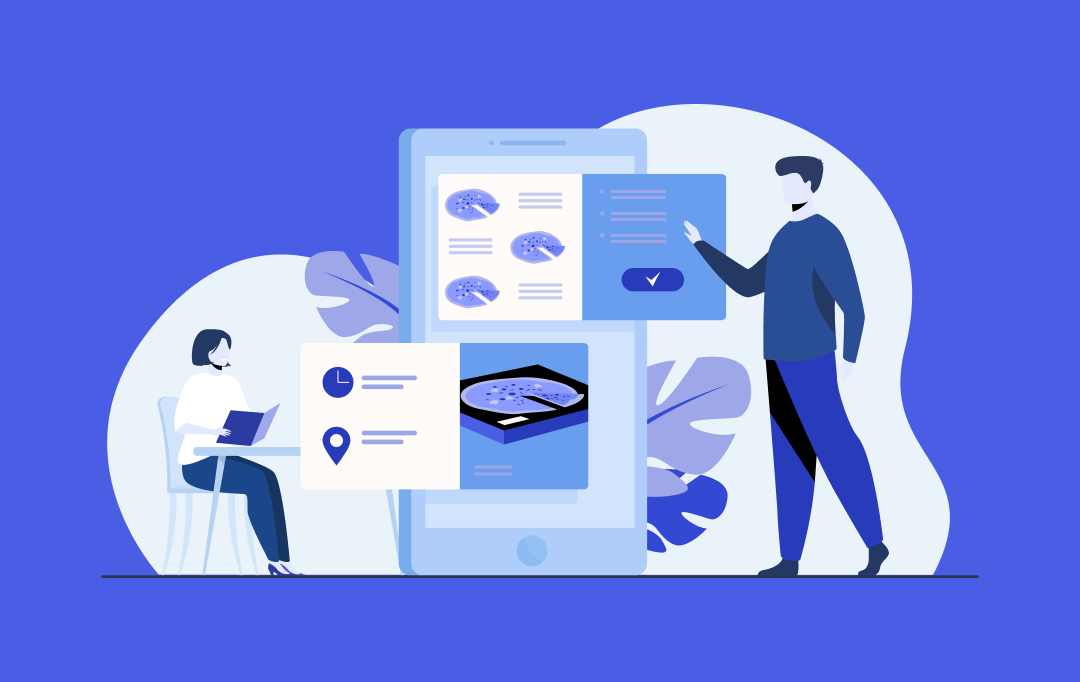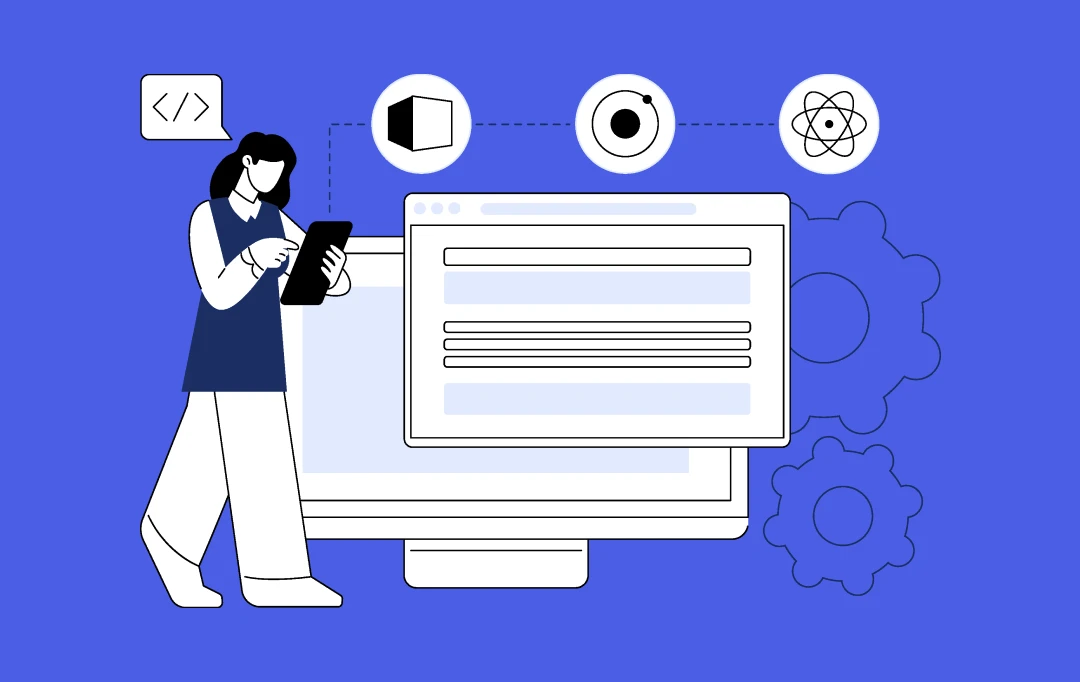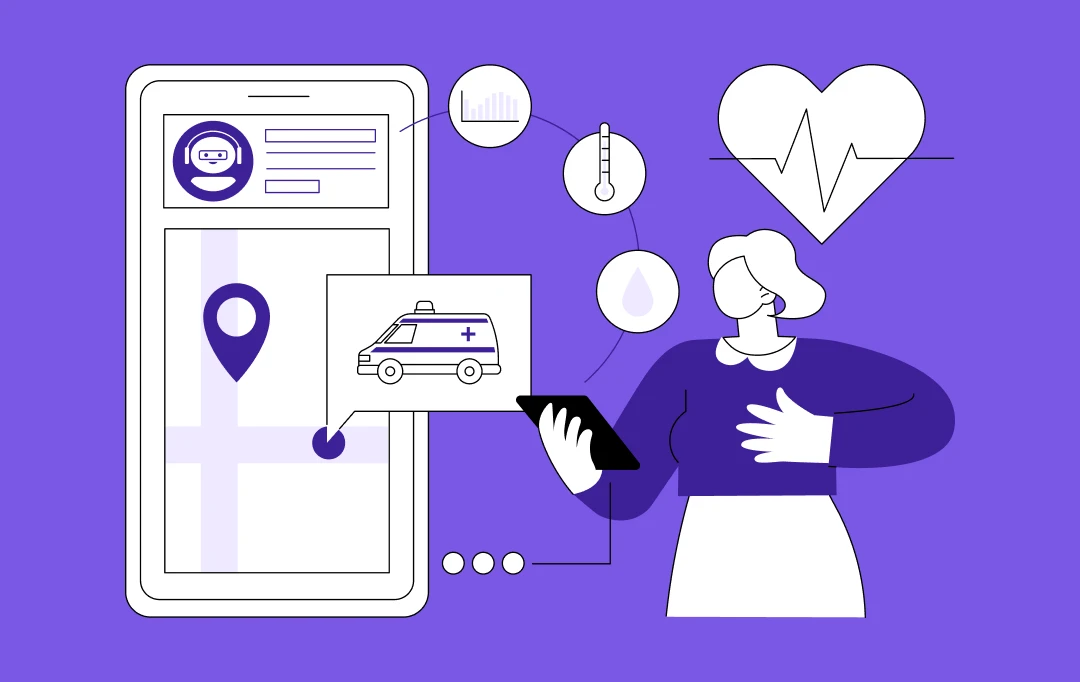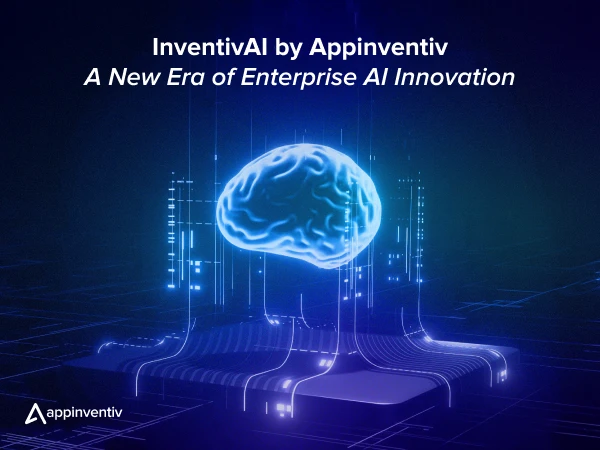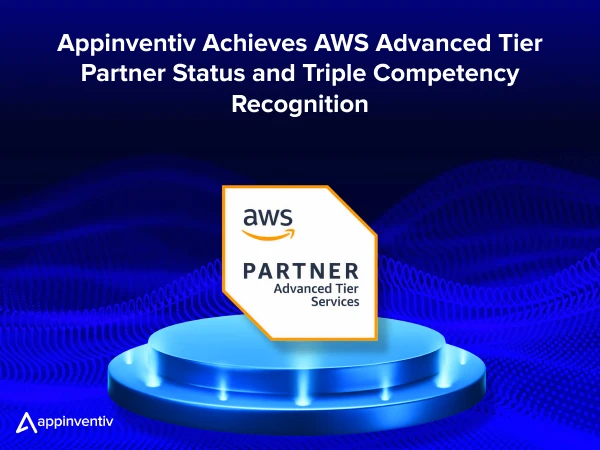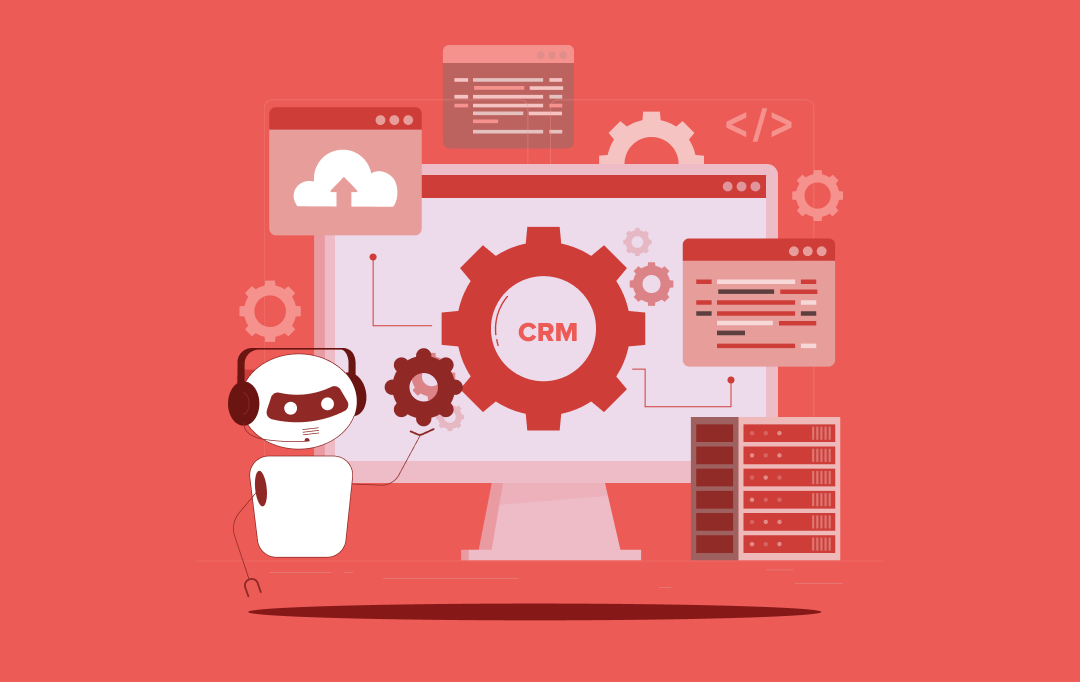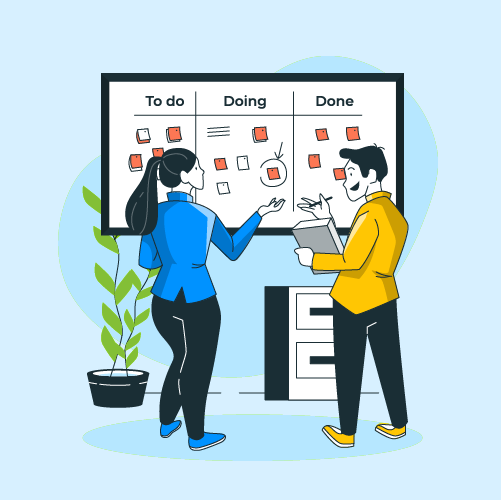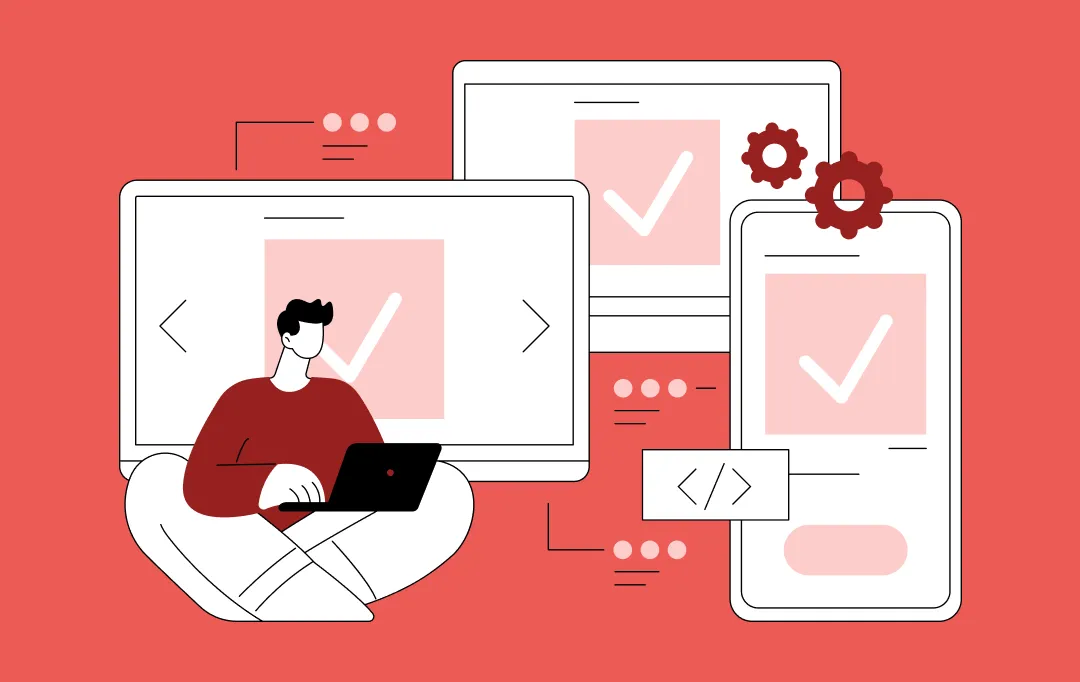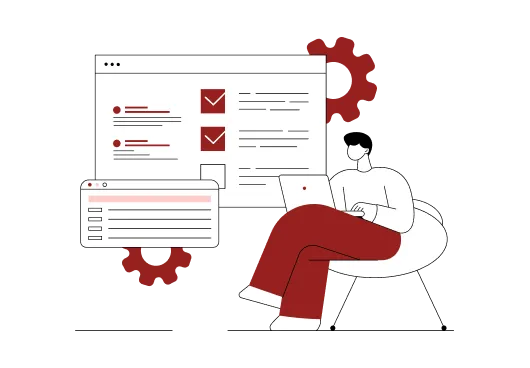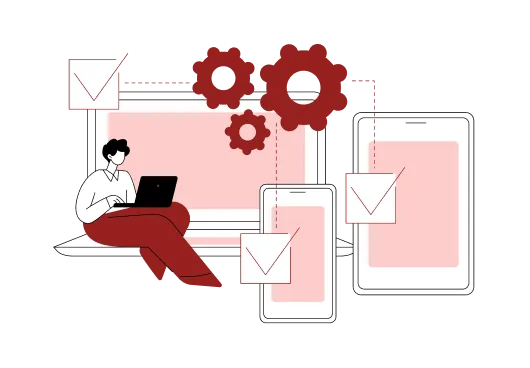- What Makes White-Label Development Different?
- Steps in Grievance Management Software Development
- 1. Requirement Gathering & Discovery
- 2. Designing Workflows
- 3. Choosing the Tech Stack
- 4. Core Feature Development
- 5. Integrations & Compliance Checks
- 6. Testing & Quality Assurance
- 7. Deployment
- 8. Ongoing Maintenance & Evolution
- Features of Grievance Management Software
- AI in Grievance Management Software
- Grievance Management Software Development Cost
- How to Lower the Cost Range
- Complexities in Grievance Management Software Development
- Choosing the Right Partner for Grievance Management Software Development
- FAQs
Key Takeaways
- White-label grievance management software allows businesses to quickly implement, rebrand, and scale solutions without reinventing the wheel.
- The development process involves multiple stages, including requirement gathering, workflow design, tech stack selection, and ensuring compliance and scalability.
- Key features include multi-channel intake, automated routing, customizable workflows, AI-driven categorization, and built-in compliance and security.
- Costs vary significantly based on complexity, with MVPs starting at $25,000, while enterprise-grade solutions can exceed $150,000, depending on features like AI and integrations.
- Choosing the right partner like Appinventiv with experience in compliance, integration, and scalability is crucial for successful and secure development.
The demand for grievance management tools has exploded. Enterprises, governments, and institutions all face the same pressure: handle complaints faster, more transparently, and in full compliance. But very few want to reinvent the wheel. They want solutions they can adopt, rebrand, and roll out quickly.
That’s where white-label grievance management software development comes in. To capture the full potential, you should not just build a grievance app but architect a core product that is robust, flexible, and scalable enough to serve multiple clients, each with their own branding, integrations, and compliance needs.
This article walks through what grievance management software entails, the steps to build it, the features you cannot skip, the development lifecycle to follow, and the real costs and complexities to plan for. Think of it as a builder’s guide: if you want to capture this demand, here’s the roadmap.
What Makes White-Label Development Different?
Building a grievance management tool for one enterprise is straightforward: gather requirements, design workflows, integrate with their systems, and ship. But building a white-label grievance management software is a different ball game. You’re not solving for one company’s needs – you are creating a framework that dozens of companies will adopt, rebrand, and rely on as if it were their own.
That changes the rules of development:
- Multi-tenancy matters. The platform must support multiple clients securely on the same infrastructure, with strict data isolation.
- Branding flexibility is non-negotiable. Each client wants the software to look like theirs — colors, logos, even domain-level customization.
- Integrations can’t be an afterthought. Every adopter has its own CRM, ERP, or HR stack. Building modular integration hooks is critical.
- Compliance must be built in. Unlike one-off software, a white-label product has to be audit-ready across industries and geographies — GDPR, HIPAA, or local labor laws.
- Scalability is part of the promise. As your clients grow, the software needs to scale with them. You’re not just selling a tool, you’re selling long-term reliability.
In other words: white-label grievance management software development is not about writing features once but about designing a core that is flexible, compliant, and brand-agnostic.
With that foundation in place, we can now move into the practical side: the steps, features, lifecycle, costs, and complexities that go into building a platform designed for resale.
Also Read: Custom Development or White Label Solutions: Which is Right for Your Business?
We can help you develop one that’s ready for market.
Steps in Grievance Management Software Development
Building a grievance management platform isn’t about stringing together a few forms and dashboards. It’s a full-cycle process that demands planning, adaptability, and foresight – especially when the goal is to build a white-label product that multiple businesses can adopt, rebrand, and scale. Over time, we’ve realized the grievance management software development life cycle isn’t a straight path but more like a loop. Each stage shapes the next, and client feedback often circles back to influence earlier choices.

Here’s how we typically approach it:
1. Requirement Gathering & Discovery
This is where the foundation is set. In regular custom builds, requirement gathering often means talking to one client. For white-label development, it’s about mapping patterns across multiple industries: employee grievance handling in enterprises, customer complaints in retail, or citizen feedback in government portals.
When we worked on one such project, our discovery didn’t stop at documenting workflows. We ran workshops with HR managers, compliance officers, and IT teams from different sectors. The challenge was spotting common denominators that every client would need, while leaving room for customization. That early research helped us avoid scope creep later.
2. Designing Workflows
A grievance logged through a mobile app may need a different escalation path than one submitted via a hotline. Designing workflows here isn’t about locking a single rigid flow — it’s about creating modular processes that clients can tweak to fit their policies.
One issue we faced was that leaders from two pilot clients wanted completely opposite escalation models: one preferred flat structures with fast resolution, the other had tiered, multi-level reviews. Our solution was to build a workflow editor inside the admin panel, so each client could configure timelines, escalation rules, and resolution paths without touching code.
3. Choosing the Tech Stack
The tech stack in creating grievance management software can’t just be about speed of development – it must support multi-tenancy, branding, and compliance from the ground up. Typically, this means:
- A web framework like React or Angular for flexibility.
- Cloud platforms like AWS or Azure for elastic scaling.
- Strong data security tools (encryption, RBAC, audit logging).
- Optional AI modules for smart routing and categorization.
In one of our builds, we initially underestimated the load multi-tenancy would create on the database layer. As client adoption grew, we hit performance issues. The fix? We shifted to a cloud-native, containerized architecture with separate data silos per tenant. It added upfront effort but made scaling seamless.
4. Core Feature Development
The must-have features usually include intake forms, case tracking, dashboards, notifications, and escalation paths. But in white-label builds, the challenge isn’t coding these features, it’s making them configurable.
For example, while developing dashboards, one client wanted trend analytics across quarters, while another only cared about “open vs closed cases.” Instead of hardcoding views, we built customizable widgets. That way, each client’s leadership could decide what mattered to them without us rewriting code.
5. Integrations & Compliance Checks
This is where things usually get messy. Every client has its own stack – one runs Salesforce, another uses a custom ERP, a third relies on government databases. Building integrations as one-offs is a recipe for chaos. Instead, we design integration hooks that can connect with different systems through APIs.
Compliance adds another layer of complexity. In one project, GDPR rules demanded data minimization and right-to-erasure features. In another, U.S. labor laws required audit trails for every grievance action. Our approach: bake compliance checks into the workflows, not bolt them on later. It made certification audits smoother and reduced post-deployment surprises.
6. Testing & Quality Assurance
Testing isn’t just about catching bugs. It’s about simulating real-world stress. We’ve run scenarios like:
- Hundreds of grievances filed in a single hour.
- Cases escalated across multiple departments simultaneously.
- Sensitive data requests during audits.
One insight we gained was that while functional tests passed easily, adoption lagged because users found the interfaces confusing. So, alongside QA, we run usability testing sessions with actual end-users. This blend of stress-testing and human feedback ensures the platform doesn’t just work – it works well.
7. Deployment
For white-label, deployment is never a one-time event. We typically start with a pilot launch for one client, gather feedback, refine the product, and only then scale. This staged rollout ensures that issues uncovered in the first live environment don’t ripple across all future clients.
In one rollout, a government client wanted offline grievance intake (kiosks in rural offices), which we hadn’t prioritized in the initial version. Because we piloted, we had room to adjust the roadmap before onboarding the next clients.
8. Ongoing Maintenance & Evolution
Grievances don’t stop, and neither does software. Maintenance here means patching vulnerabilities, adding features, and updating compliance. But in a white-label model, the challenge is keeping the core stable while still rolling out customizations for individual clients.
Our solution has been to maintain a core product roadmap (shared by all clients) alongside client-specific feature branches. This way, upgrades don’t break stability, and every client feels their unique needs are met without fragmenting the product.
Features of Grievance Management Software
Ask anyone who has tried to manage complaints manually, and they’ll tell you – the small things are what cause the biggest headaches. Emails that slip past unnoticed. Cases that sit in a folder for weeks. Leaders have no clue where the bottleneck is. The real strength of a grievance platform isn’t about buzzwords; it’s about fixing these everyday frustrations.

Some of the most critical features of grievance management software usually include:
- Multi-channel intake. Complaints rarely arrive through just one door. They show up in emails, HR systems, support hotlines, and even social channels. A good system pulls them all into one place.
- Automated routing. Nobody has time to forward tickets around. The platform should know exactly where each grievance needs to land.
- Clear workflows. Deadlines, escalation rules, service-level agreements – these keep grievances from drifting into a black hole.
- Dashboards that actually matter. Not vanity charts, but insights: where cases are piling up, which issues repeat, what trends are emerging.
- Reminders and alerts. Simple, yes, but without them, cases get lost.
- Compliance and security built in. Data trails, encryption, audit logs – because grievances often involve sensitive information and regulators don’t forgive sloppiness.
- Optional intelligence. AI that helps classify cases or flag urgency can be useful, but only if it makes the workflow smoother rather than more complicated.
No feature alone solves the challenge, but together they build trust in the system. And when clients trust the platform, they stick with the provider behind it.
AI in Grievance Management Software
Most grievance platforms can track cases and move them along. That works fine until volume shoots up or subtle patterns get buried. This is where AI modules add an extra layer of intelligence – not to replace people, but to make the system smarter and faster.
Some common AI-driven capabilities include:
- Automated categorization and routing
Natural language processing can read the grievance text, tag it, and send it to the right department.
Effort: 3–4 weeks of model training and integration
Added Cost: +$15,000–$25,000 on top of the base platform - Sentiment and urgency detection
Instead of treating every ticket as equal, AI can flag grievances with frustration or urgency in tone, so they don’t sit idle.
Effort: 4–6 weeks, depending on language coverage
Added Cost: +$20,000–$30,000
[Also Read: Harnessing the Power of AI Sentiment Analysis] - Predictive insights
By scanning thousands of historical complaints, AI can detect recurring issues before they escalate.
Effort: 6–8 weeks (requires data cleaning + analytics pipeline)
Added Cost: +$30,000–$50,000 - Chatbots for intake
AI-powered assistants can log grievances at any hour, ask clarifying questions, and create tickets automatically.
Effort: 8–10 weeks to design flows + integrate with backend
Added Cost: +$40,000–$60,000
[Also Read: The Cost and Benefits of Developing an AI-Powered Smart Personal Assistant App]
These add-ons are definitely not cheap, and they do increase development timelines, but for providers offering white-label grievance management software development, AI can be the differentiator that wins deals. A platform that not only tracks cases but also triages, predicts, and listens 24/7 positions you as forward-looking – something clients increasingly demand.
The trade-off is real: higher effort and higher cost to build grievance management software, balanced by a stronger product and a market edge. For many providers, that’s an investment worth making.
Grievance Management Software Development Cost
When providers ask about cost, the first thing to clarify is that price isn’t fixed – it scales with complexity. A basic grievance platform with just intake and tracking looks nothing like a feature-heavy enterprise system with integrations, analytics, and AI modules. Each layer adds time, expertise, and therefore cost.
In other words, grievance management software development cost is not a single figure but the sum of multiple choices made along the way. Below is a breakdown of how different complexities typically shape the budget:
| Complexity Area | What it Involves | Estimated Cost Impact (USD) |
|---|---|---|
| Core Features | Basic intake, routing, and resolution workflows | $25,000 – $40,000 (MVP-level build) |
| Customization | Unique workflows, domain-specific compliance, or tailored dashboards | +$10,000 – $30,000 depending on scope |
| Integrations | Connecting with HRMS, CRM, ERP, or government systems | +$15,000 – $50,000 (legacy = higher end) |
| Compliance & Security | Data encryption, audit trails, GDPR/local laws, multi-level access control | +$20,000 – $60,000 (can double dev hours) |
| Advanced Features | AI-driven case categorization, predictive analytics, and multi-language support | +$30,000 – $80,000 |
| Deployment Model | On-premise setup (infra, servers) vs. cloud deployment | On-prem: +$50,000+ upfront / Cloud: lower initial |
| Ongoing Maintenance | Patches, feature upgrades, regulatory updates, and user support | 20–30% of the build cost annually |
So, while a lean MVP with only the essentials would get delivered in the $25,000 – $50,000 range, a full-scale enterprise platform with AI, integrations, and strong compliance layers will easily cross the $150,000 – $250,000 mark.
How to Lower the Cost Range
Reducing grievance management software development cost doesn’t always mean cutting features. More often, it’s about making smart decisions during the grievance management software development life cycle:
- Start with an MVP. Build the essentials first – intake, routing, dashboards – then layer in advanced features later. This controls upfront spending.
- Leverage white-label frameworks. Instead of coding every module from scratch, adapt existing proven platforms. This slashes both time and cost.
- Prioritize integrations. Don’t connect to every system at once. Begin with the most critical (HR or CRM) and expand gradually.
- Choose cloud over on-premise. Unless there’s a strict regulatory reason, cloud deployment reduces infrastructure and maintenance costs significantly.
- Automate compliance. Use a tech stack in creating grievance management software that will embed compliance templates upfront and reduce expensive rework later.
- Plan support realistically. Budgeting for 20 to 30% annual upkeep will help you eliminate surprise expenses down the line.
In practice, providers who scope tightly, phase rollouts, and lean on white-label models can often reduce the total build costs by 30 to 40% compared to a full custom build that is launched all at once.
Complexities in Grievance Management Software Development
At first glance, white-label grievance management software development process seems straightforward. Intake forms, routing rules, resolution workflows – done. But once providers start developing, the cracks show. The truth is, the challenges of grievance management software development rarely lie in the surface-level features. They come from the messy, behind-the-scenes realities.
Take integrations, for example. A client may run an HR system that’s 12 years old and a CRM that’s been customized so many times no one remembers the original version. Making your modern grievance tool connect smoothly with those systems? That’s not a weekend job – it’s months of testing and rework.
Compliance is the part that hurts most teams. Every region throws in its own flavor of red tape – GDPR in Europe, state labor codes in the U.S., sector laws in banking or healthcare. Miss one, even a small clause, and suddenly you’re not just patching software, you are staring at fines, or worse, explaining to a client why their trust took a hit.
Sounds like a checklist, right? It never is. In reality, you are integrating rules into workflows, building audit trails that hold up when someone actually checks them, and double-checking nothing slips through. It eats time, resources, and usually more budget than anyone planned at the start.
Security sits right beside compliance. Encryption, role-based access, intrusion prevention – the checklist is long. The challenge isn’t knowing what needs to be done; it’s doing it without slowing the system down or pricing yourself out of the market.
And let’s not forget user adoption. You can design the most feature-rich platform in the world, but if the employees find it clunky or confusing, they will find every possible reason to bypass it, and suddenly, you will be spending weeks redesigning interfaces just to get basic usage.
Finally, the elephant in the room: cost creep. What begins as a lean MVP – maybe a $40k project – can expand quickly once clients start asking for AI modules, advanced analytics, or multi-language support. Without strong scope management, the cost to build grievance management software can spiral out of control.
The hard part is that these complexities overlap. Compliance impacts security. Integrations impact adoption. And cost touches everything. Providers who succeed aren’t just the ones who can code well – they are the ones who can juggle all these moving parts without letting the project stall.
Choosing the Right Partner for Grievance Management Software Development
Grievance systems are sensitive products. They sit at the intersection of compliance, security, and trust – which means they can’t be built like a generic enterprise app. The partner you choose has to prove they’ve solved these challenges before.
At Appinventiv, we have done exactly that. As a custom software development company, we have worked with enterprises, governments, and service providers who needed grievance handling systems that were not just functional, but scalable and compliant.
A few real-world examples from our custom grievance management software development services:
Government department → We developed a citizen grievance portal that handled 50,000+ complaints per month, integrated with existing e-governance systems, and delivered multilingual support for accessibility.
Telecom enterprise → We customized a grievance management platform to plug directly into the client’s HRMS and CRM. The system processed 8,000+ employee and customer complaints monthly, cutting average resolution time by 40%.
Financial services provider → We provide white-label development services for grievance solution development, where compliance with GDPR and local banking laws was baked into workflows. This allowed the provider to roll out the product under their own brand in multiple countries.
These aren’t abstract promises – they are live deployments serving thousands of end users. The reason clients choose Appinventiv is that we combine grievance management software development expertise with the ability to tailor solutions to their environment – whether that means integration-heavy builds, compliance-driven workflows, or scaling platforms across geographies.
For providers considering how to enter this space, the question isn’t whether to build or buy. It’s who can help you deliver faster, stay compliant, and still keep the product under your brand. That’s where Appinventiv, as a custom software development company brings both credibility and experience to the table with a detailed pre-planning of benefits & challenges of grievance management software development. Connect with us.
Conclusion
Grievances won’t wait. Whether it’s an employee complaint, a customer escalation, or a citizen raising a concern, the clock starts ticking the moment an issue is logged. Manual systems can’t keep up anymore – and truthfully, even a basic digital tool isn’t enough for organizations that deal with volume and compliance every single day.
That’s why more providers are investing in white-label grievance management software development. It cuts the long build cycles, reduces risk, and lets you deliver a proven solution under your own brand. Yes, the journey has its hurdles – integrations, compliance, cost creep – but those are exactly the points where experience makes the difference.
At the end of the day, building a platform like this isn’t just a tech project. It’s a commitment to helping organizations handle grievances fairly, transparently, and fast. And if you’re looking for a partner who has done it before, Appinventiv brings both the expertise of a custom software development company and a track record of delivering grievance management software development services at scale.
The demand is already here. The question is whether you’ll lead it – or watch someone else take that space.
FAQs
Q. How much does it cost to build a white-label grievance management software?
A. There’s no fixed number for custom grievance management software development. It really depends on what you’re trying to put out there. If you only need the basics – like grievance intake, routing, and a simple dashboard – you might get it going for $25,000–$40,000. The moment you start adding heavier stuff like deep integrations, strong compliance layers, or AI modules, the cost to build grievance management software development climbs. Full enterprise builds can touch $150,000–$200,000+ pretty quickly. The smart move is usually to launch lean, then expand.
Q. How long does it take to develop complaint management software?
A. Timelines are just as variable as cost. If you’re using a white-label base and only tweaking it, we have seen teams go live in 10–12 weeks. Try building everything custom and enterprise-grade, and you’re looking at 6–9 months easy. The trap a lot of teams fall into is trying to launch every single feature in the first release. That slows things down. The faster route is to get an MVP out the door, prove adoption, then layer on more.
Q. What are the difficulty levels of integrating grievance management software in existing business?
A. It’s rarely the software itself – it is the integration that gets messy. If the business stack is modern and API-friendly, you can usually hook it up in a few weeks. But when you’re dealing with old ERPs or heavily customized systems, expect a couple of months. The silver lining? Once it’s connected properly, adoption jumps because people don’t feel like they’re stuck with “one more platform” to manage.
Q. What is Grievance Management Software and Why Build One?
A. Grievance management software helps organizations log, route, and resolve complaints in one system instead of scattered emails or spreadsheets. The benefits of grievance management software development often includes – Faster resolutions and accountability, Built-in compliance reporting, Data-driven insights for leaders, and Improved trust with employees and customers
Companies either choose custom grievance management software development for unique needs or white-label grievance management software development to launch faster under their own brand.


- In just 2 mins you will get a response
- Your idea is 100% protected by our Non Disclosure Agreement.
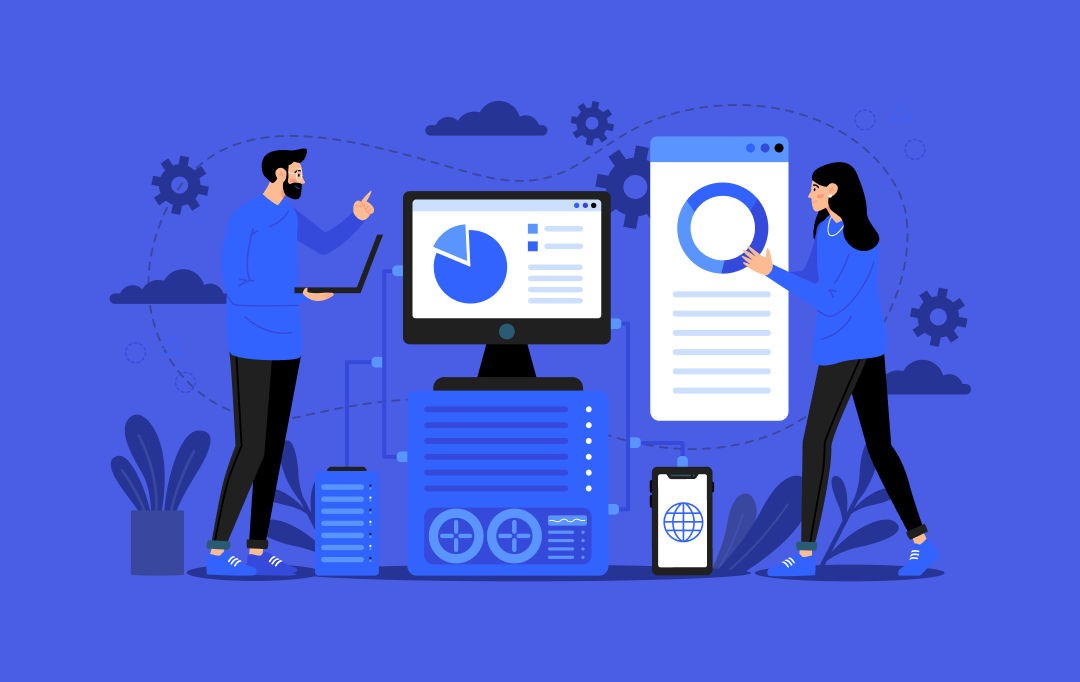
How Much Does It Cost to Build a White-Label Enterprise Procurement Software?
Key takeaways: The development of white-label enterprise procurement software typically costs between $50,000 and $500,000, depending on complexity and features. Key features include vendor management, budget tracking, purchase approvals, and invoice automation. Flexible monetization models - from modular licensing to integration fees- can future-proof revenue streams. Building a custom white-label solution gives you long-term control…

A Clear Breakdown of Custom Software Development Costs for Businesses in Canada
Key takeaways: Custom software in Canada typically ranges from CAD 55,00 to 550,000 ($40,000 to $400,000), depending on scope, integrations, and compliance. Costs rise in regulated sectors due to PHIPA, PCI DSS, AML rules, and strict Canadian data residency requirements. Planning, modular architecture, and cloud native services help control the software development cost in Canada…
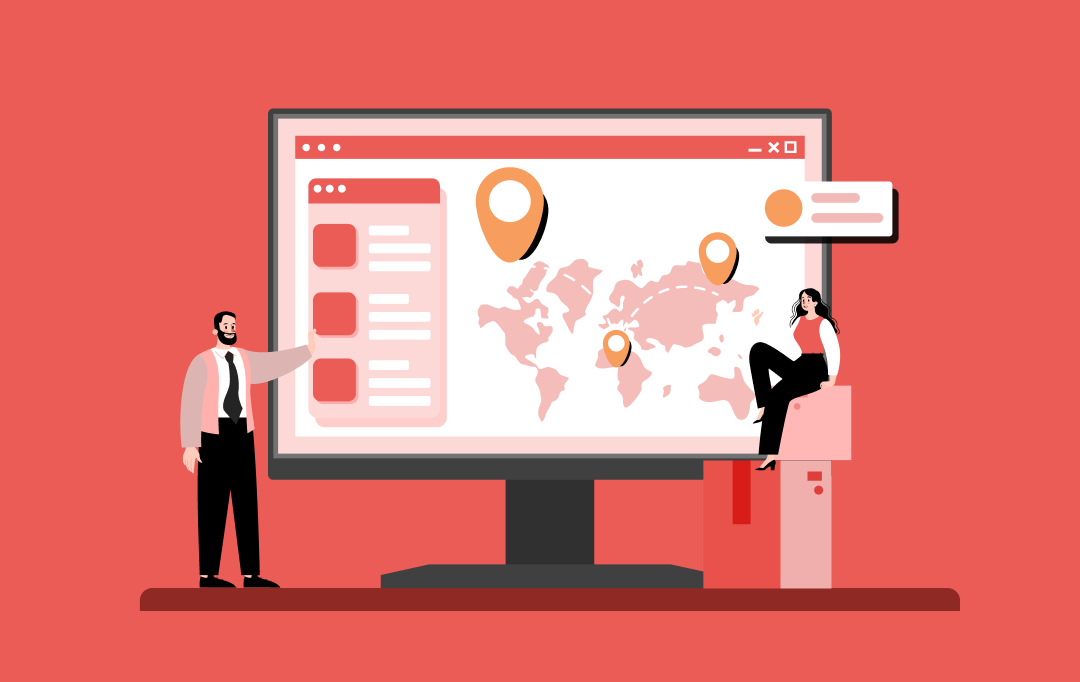
The Real Cost of Building Professional Delivery Management Software
Key takeaways: Custom delivery management software has complete flexibility, scale, and integration, which conforms to the distinctive requirements of business. Fluid connection to ERP, CRM, and payment systems also introduces a large amount of complexity and additional cost, but is the key to efficiency. It is important to design scalable systems to grow in the…
